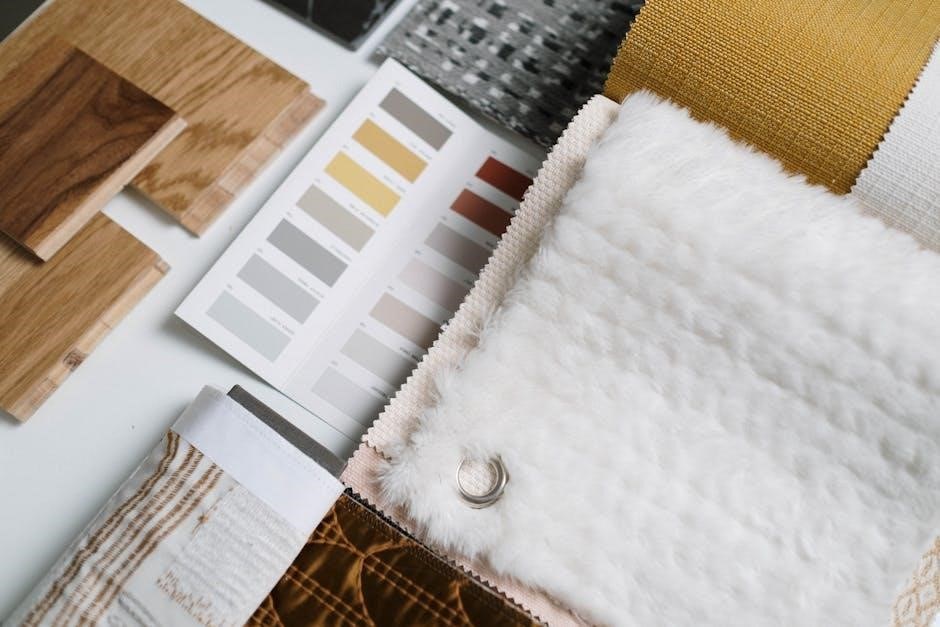Embark on a journey into the art of colour matching! This guide unveils the secrets to creating harmonious and visually appealing combinations. Discover the theory, practical tools, and tips for mastering colour palettes, ensuring your projects stand out.
Colour matching, a crucial skill in various fields from fashion to interior design, involves selecting colours that harmonize effectively. It’s more than just personal taste; it requires knowledge of colour theory. Understanding how colours interact allows you to create visually pleasing and balanced compositions.

This guide offers advice, tips and tricks, and examples for matching colours successfully, even when unsure where to start. Whether you’re coordinating outfits or designing a room, mastering colour matching enhances the overall aesthetic.
Colour matching is a skill that can be learned. It’s about understanding colour relationships and applying them practically. From monochromatic schemes to contrasting combinations, there are various techniques to explore.

By understanding colour theory, you can create visually cohesive and impactful designs. This guide provides the knowledge and tools to confidently navigate the world of colour, ensuring your creations are both beautiful and effective. Embrace the power of colour and elevate your projects with harmonious combinations.
Understanding Colour Theory Basics
Colour theory provides the foundation for effective colour matching. It explores how colours interact, mix, and create visual effects. Key concepts include hue, saturation, and value. Hue refers to the pure colour, saturation to its intensity, and value to its lightness or darkness.
The colour wheel is a visual representation of these relationships, showcasing primary, secondary, and tertiary colours. Primary colours (red, yellow, blue) are the base from which all other colours are derived. Secondary colours (green, orange, purple) are created by mixing two primary colours.
Tertiary colours result from mixing a primary and a secondary colour. Understanding these basics allows you to predict how colours will behave together.
Colour temperature, another essential aspect, refers to the warmth or coolness of a colour. Warm colours (reds, oranges, yellows) evoke energy and excitement, while cool colours (blues, greens, purples) create a sense of calm and serenity. By grasping these fundamentals, you can confidently create harmonious and visually appealing colour schemes for any project.
The Colour Wheel and its Applications
The colour wheel is an indispensable tool for understanding colour relationships. It visually organizes hues, revealing harmonious and contrasting combinations. Primary colours—red, yellow, and blue—form the foundation. Mixing these creates secondary colours: green, orange, and purple. Tertiary colours arise from blending primary and secondary hues, expanding the spectrum.
One key application is identifying complementary colours, found opposite each other on the wheel. These pairings, like red and green, create high contrast and visual excitement. Analogous colours, located adjacent to each other, offer harmonious, soothing combinations, such as blue, blue-green, and green.
Triadic colour schemes involve three evenly spaced colours, like red, yellow, and blue, providing balance and vibrancy. The colour wheel also helps in understanding colour temperature. Warm colours (reds, oranges) evoke energy, while cool colours (blues, greens) convey calmness.
By mastering the colour wheel, you gain the ability to create deliberate and effective colour palettes for various design applications, whether in fashion, interior design, or graphic arts.
Achromatic Combinations
Achromatic colour schemes revolve around the absence of colour, utilizing shades of grey, black, and white. These combinations offer a timeless, sophisticated aesthetic, characterized by their versatility and elegance. Achromatic palettes are inherently harmonious, as the neutral tones blend seamlessly with one another;
When creating an achromatic look, it’s crucial to introduce textural variations and interesting silhouettes to prevent the ensemble from appearing flat or monotonous. Experiment with different fabric weights, patterns, and finishes to add depth and visual interest. Introducing metallic accents, such as silver or gold, can further elevate the look, providing a touch of glamour and sophistication.
To inject personality and prevent the outfit from feeling stark, consider incorporating a single, well-chosen colour accent. A vibrant scarf, statement jewellery, or colourful footwear can serve as a focal point, drawing the eye and adding a pop of energy to the otherwise neutral palette. The key is to maintain balance, ensuring the accent complements rather than overwhelms the achromatic base.
Achromatic combinations provide a versatile canvas for personal expression, allowing for endless creativity and refinement.
Matching Primary Colours
The art of matching primary colours – red, yellow, and blue – lies in understanding their inherent harmony. These fundamental hues, the building blocks of all other colours, possess a natural affinity that creates visually striking and balanced combinations. When paired thoughtfully, primary colours evoke feelings of boldness, energy, and timeless appeal.
Successfully matching primary colours involves considering their relative proportions and intensities. A dominant colour, such as a deep red, can be balanced by smaller accents of yellow and blue. Alternatively, a more subdued palette can be achieved by using muted or pastel variations of the primary hues.
One effective approach is to create a focal point with one primary colour and then use the other two as complementary accents. For example, a yellow dress could be accessorized with a red handbag and blue shoes, creating a vibrant and eye-catching ensemble. The key is to ensure that the colours are balanced and do not clash with one another.
Experimentation is key when working with primary colours. Don’t be afraid to try unexpected combinations and play with different shades and textures; Ultimately, the goal is to create a visually pleasing and harmonious composition that reflects your personal style and aesthetic.
Colour Temperature and Skin Tone
Understanding the interplay between colour temperature and skin tone is crucial for creating flattering and harmonious looks. Colour temperature refers to the warmth or coolness of a colour, with warm colours like reds, oranges, and yellows evoking a sense of energy and vibrancy, while cool colours like blues, greens, and purples convey calmness and serenity.
Skin tones, on the other hand, are typically categorized as either warm, cool, or neutral. Warm skin tones have yellow or golden undertones, cool skin tones have pink or blue undertones, and neutral skin tones have a balance of both.

To enhance your natural beauty, it’s essential to choose colours that complement your skin tone. People with warm skin tones often look best in warm colours, which bring out their natural radiance. Conversely, those with cool skin tones tend to shine in cool colours, which accentuate their complexion’s coolness.
However, these are just guidelines, and personal preference plays a significant role. Experimenting with different colours and observing how they interact with your skin tone is the best way to discover what works best for you. Consider factors like hair colour and eye colour to create a cohesive and flattering overall look.
Ultimately, the goal is to choose colours that make you feel confident and comfortable. By understanding the relationship between colour temperature and skin tone, you can unlock a world of possibilities and create stunning and personalized looks.
Monochrome Colour Matching
Monochrome colour matching is a simple yet effective technique that involves using different shades, tints, and tones of a single colour to create a cohesive and visually appealing look. This approach offers a sense of sophistication and elegance, making it a popular choice in both fashion and interior design.
The key to successful monochrome matching lies in understanding the nuances of colour variation. A shade is created by adding black to a colour, a tint by adding white, and a tone by adding grey. By carefully selecting different shades, tints, and tones of the same colour, you can create depth and dimension in your outfit or space.
For example, in fashion, you might pair a light blue shirt with dark blue trousers and a navy blue jacket. This creates a harmonious and stylish look that is both subtle and eye-catching. In interior design, you could use different shades of grey to create a calming and sophisticated living room.
To add visual interest to a monochrome scheme, consider incorporating different textures and patterns. For example, a knitted sweater paired with silk trousers can create a luxurious and tactile effect. You can also use accessories or decorative elements in a complementary colour to add a pop of vibrancy.
Monochrome colour matching is a versatile technique that can be adapted to suit any style or preference. Whether you prefer bold and dramatic looks or subtle and understated ones, monochrome offers a timeless and elegant solution.
Contrasting Colour Combinations
Contrasting colour combinations involve pairing colours that are significantly different from each other on the colour wheel. This creates a dynamic and visually stimulating effect, adding energy and excitement to designs and outfits.

One of the most common methods for creating contrasting combinations is to use complementary colours, which are located directly opposite each other on the colour wheel. Examples include red and green, blue and orange, and yellow and purple. When used together, these colours create a strong sense of contrast and can make each other appear more vibrant.
Another approach is to use a split-complementary combination, which involves choosing a colour and then pairing it with the two colours adjacent to its complement. This creates a more nuanced and balanced contrast than using direct complements.
When working with contrasting colours, it’s important to consider the overall balance and harmony of the composition. One colour should typically be dominant, while the other serves as an accent. You can also use neutral colours to create a sense of calm and stability.
In fashion, contrasting colours can be used to create bold and eye-catching outfits. For example, you might pair a bright yellow top with a deep purple skirt. In interior design, contrasting colours can be used to create a sense of drama and excitement. For example, you might paint a room with a bright blue wall and then add orange accents.
Experiment with different combinations to find what works best for your personal style and the specific context of your project. Remember to consider the intensity and saturation of the colours, as well as the overall balance of the composition.
Using Complementary Colours
Complementary colours, found directly opposite each other on the colour wheel, offer a dynamic and visually stimulating approach to colour matching. This pairing creates a high level of contrast, making each colour appear more vibrant and intense.
Classic examples of complementary colour schemes include red and green, blue and orange, and yellow and purple. These combinations are often used to create a sense of energy and excitement, drawing the eye and making a bold statement.
When using complementary colours, it’s crucial to consider the balance and harmony of the overall composition. One colour should typically dominate, while the other serves as an accent. This prevents the combination from becoming overwhelming or visually jarring.
For a more subtle approach, consider adjusting the saturation or value of the colours. For instance, pairing a muted shade of blue with a desaturated orange can create a more sophisticated and refined look.
In fashion, complementary colours can be used to create eye-catching outfits. A blue dress paired with orange accessories, or a red top with green pants, are examples of how to incorporate this technique.
In interior design, complementary colours can add depth and interest to a space. Blue walls with orange accents, or yellow furniture in a purple room, can create a visually appealing and balanced environment.
Experiment with different shades and tones of complementary colours to discover the combinations that best suit your personal style and the specific context of your project. Remember to consider the overall mood and message you want to convey, and use complementary colours to enhance that effect.
Tools for Colour Matching
Achieving perfect colour harmony often requires the aid of specialized tools. Colour wheels are fundamental, visually representing colour relationships and aiding in identifying complementary, analogous, and triadic colour schemes.
Digital colour palettes and online colour matching tools offer a vast library of pre-selected colour combinations, streamlining the selection process. These tools often allow users to upload images and extract dominant colours, simplifying the task of matching colours from existing sources.
Software like Adobe Color provides interactive colour wheels, enabling users to experiment with different colour harmonies and create custom palettes. These platforms also offer accessibility features, ensuring colour combinations are suitable for users with visual impairments.
For interior design, paint matching apps allow users to scan a colour from a physical object and instantly find the corresponding paint shade. These apps eliminate guesswork and ensure accurate colour replication.
Colourimeters and spectrophotometers are professional-grade tools used to measure colour precisely. These devices provide objective colour data, ensuring consistency and accuracy in colour reproduction across different mediums.
Pantone colour guides are industry-standard references, providing a universal language for colour identification and communication. These guides are essential for designers and manufacturers, ensuring accurate colour matching across various products and materials.
Consider utilizing colour swatches and physical samples when making colour decisions. Viewing colours in different lighting conditions is crucial, as lighting significantly impacts colour perception. By employing these tools, you can confidently create harmonious and visually appealing colour combinations.
Colour Matching Tips for Outfits
Creating stylish outfits involves understanding how colours interact. Start with a colour wheel to identify complementary colours that create contrast or analogous colours for a harmonious look. Monochrome outfits, using different shades of one colour, offer a sophisticated and effortless style.
Consider your skin tone when choosing colours. Warm skin tones often look best in earthy colours like olive green and mustard yellow, while cool skin tones shine in blues, purples, and greys. Neutral colours like black, white, and grey work well with any skin tone, providing a versatile base for your wardrobe.
Accessorize strategically to add pops of colour. A scarf, handbag, or shoes in a contrasting colour can elevate a neutral outfit. When matching primary colours, pair them with other primary colours for a bold and eye-catching statement, but use caution with opposing colours to avoid clashing.
Don’t be afraid to experiment with colour blocking, combining bold, contrasting colours in distinct sections of your outfit. Start with fewer colours and gradually add more as you become comfortable.
Remember that colour matching extends beyond just the clothes. Consider the colour of your jewellery and makeup to create a cohesive and polished look. Ultimately, confidence is key. Wear what makes you feel good, and don’t be afraid to break the rules and express your personal style.
Colour Matching for Interior Design
When designing a space, colour matching is crucial for creating a cohesive and inviting atmosphere. Start by identifying your desired mood and style, whether it’s calming and serene or vibrant and energetic. Use the colour wheel to explore different colour schemes, such as complementary, analogous, or triadic, to achieve the desired effect.
Consider the existing elements in the room, such as flooring, furniture, and architectural details, when selecting your colour palette. Neutral colours like white, grey, and beige provide a versatile backdrop that allows you to introduce pops of colour through accessories and artwork.
Pay attention to the lighting in the room, as it can significantly impact how colours appear. Natural light tends to enhance colours, while artificial light can alter them. Test paint samples in different areas of the room at different times of the day to ensure you’re happy with the results.
Use colour to create visual interest and define different zones within the space. Darker colours can make a room feel smaller and more intimate, while lighter colours can create a sense of spaciousness. Use accent colours to highlight focal points and add personality to the room.
Don’t be afraid to mix and match different textures and patterns to add depth and dimension to your design. Coordinate the colours of your textiles, such as curtains, rugs, and cushions, to create a harmonious and layered look.



